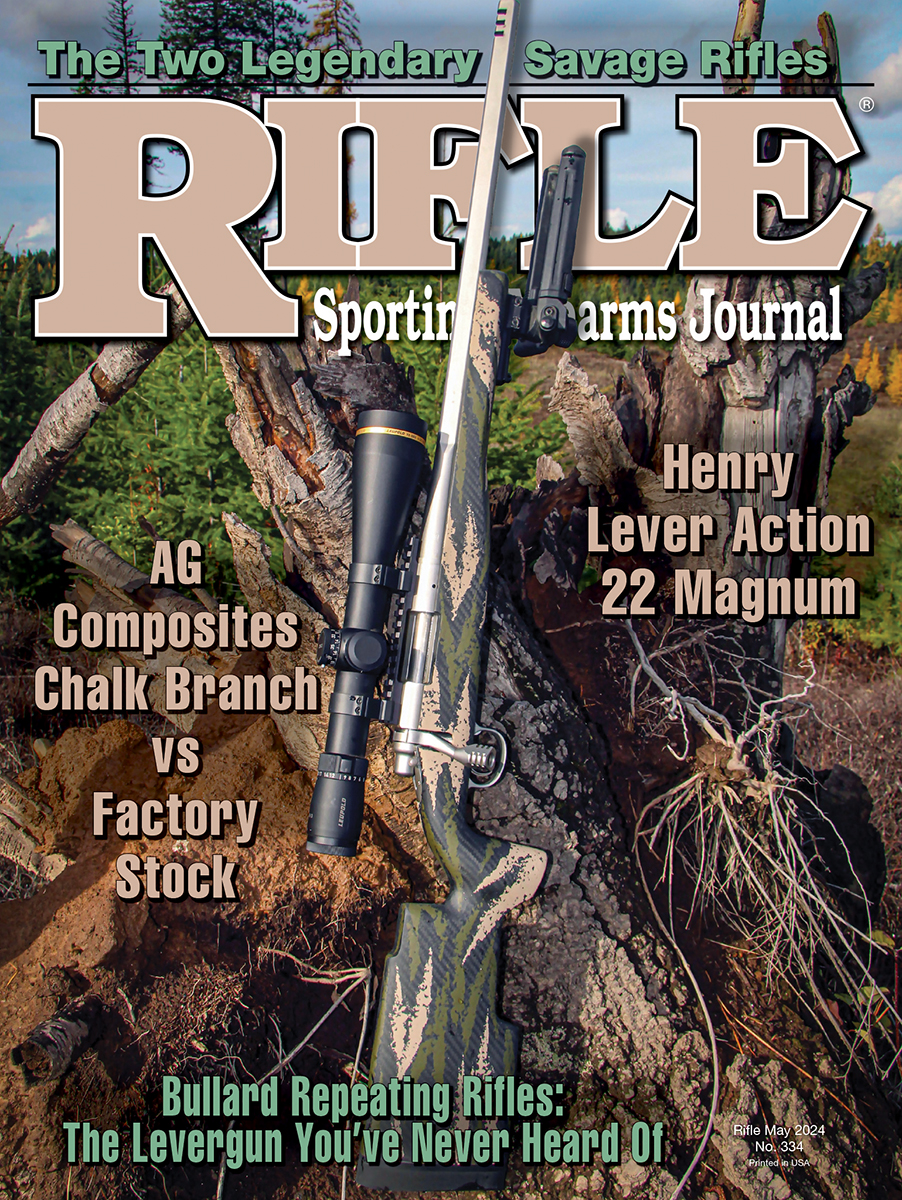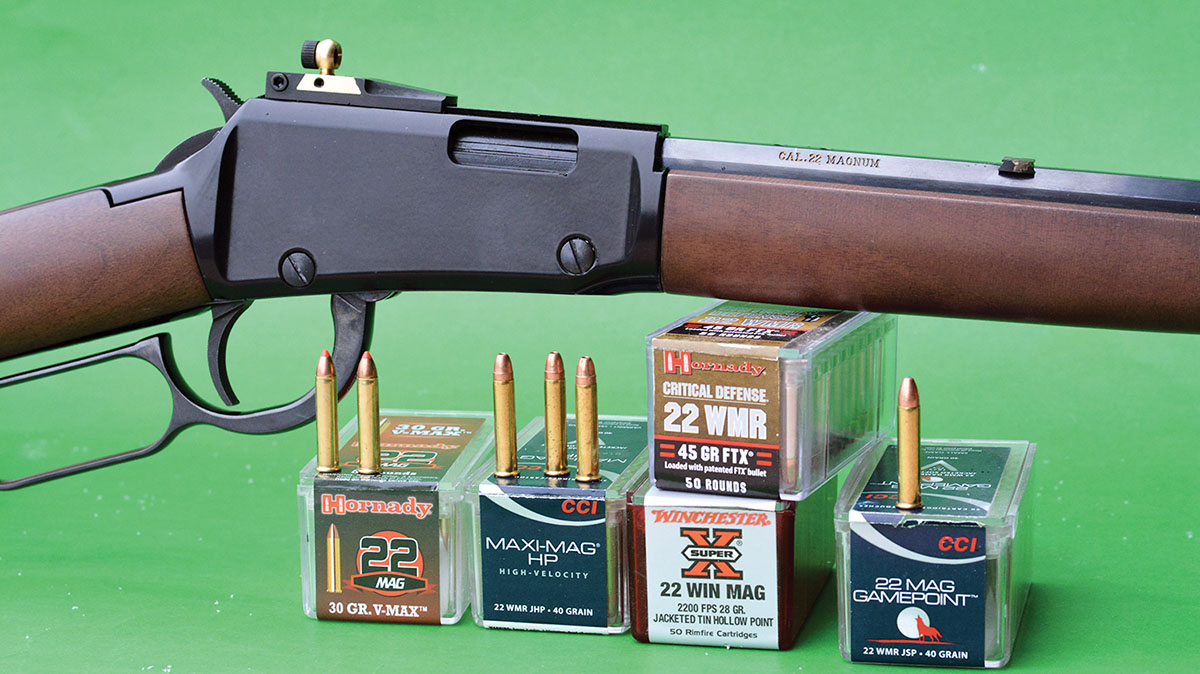
A variety of 22 Magnum factory loads were tried that provided respectable accuracy and positive functioning.
In
Rifle No. 333 (March – April 2024), I discussed the history and virtues of the 22 WMR or 22 Magnum cartridge and why I’m so fond of it. However, after
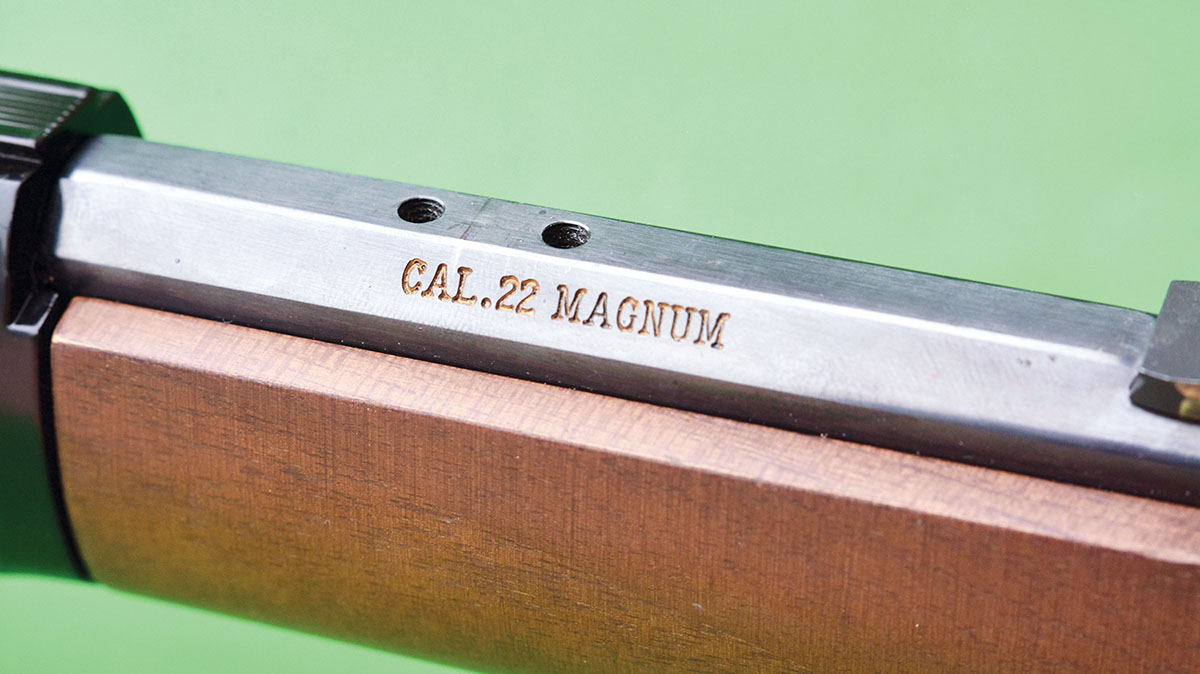
“CAL .22 MAGNUM” barrel marking.
concluding my comments, it occurred to me that most of my rifles are now classics and have long since been discontinued. While there are many good bolt rifles currently available from Ruger, Savage and others at a relatively modest cost, the only lever-action rifle currently available is from Henry Repeating Arms Company, which is produced 100 percent in U.S.
A Henry Frontier 22 Magnum (Model No. H001TM) was purchased that features a 20½-inch octagonal barrel with a traditional looking full-blue finish along with a classic walnut stock. I like the layout of this model, as it offers modern levergun stock dimensions and provides a bit more muzzle weight for better offhand shooting in the field and is reminiscent of how great rimfire rifles used to appear.
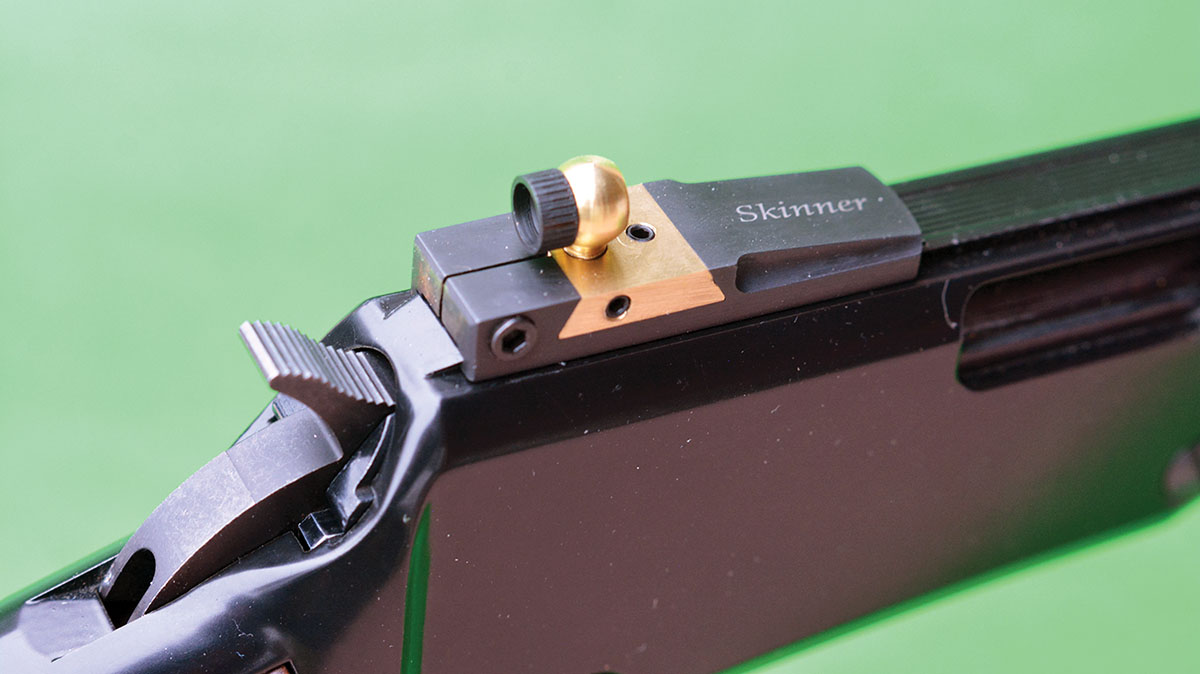
Brian installed a Skinner aperture rear sight that offers a ghost ring and interchangeable apertures and is an excellent choice for a hunting rifle.
Henry Repeating Arms is a relatively young, but very successful gun company. Briefly, its roots started during the 1990s when they purchased tooling from the West German company, Erma-Werke, that was used to build the rimfire Ithaca Model 72 Saddlegun that was
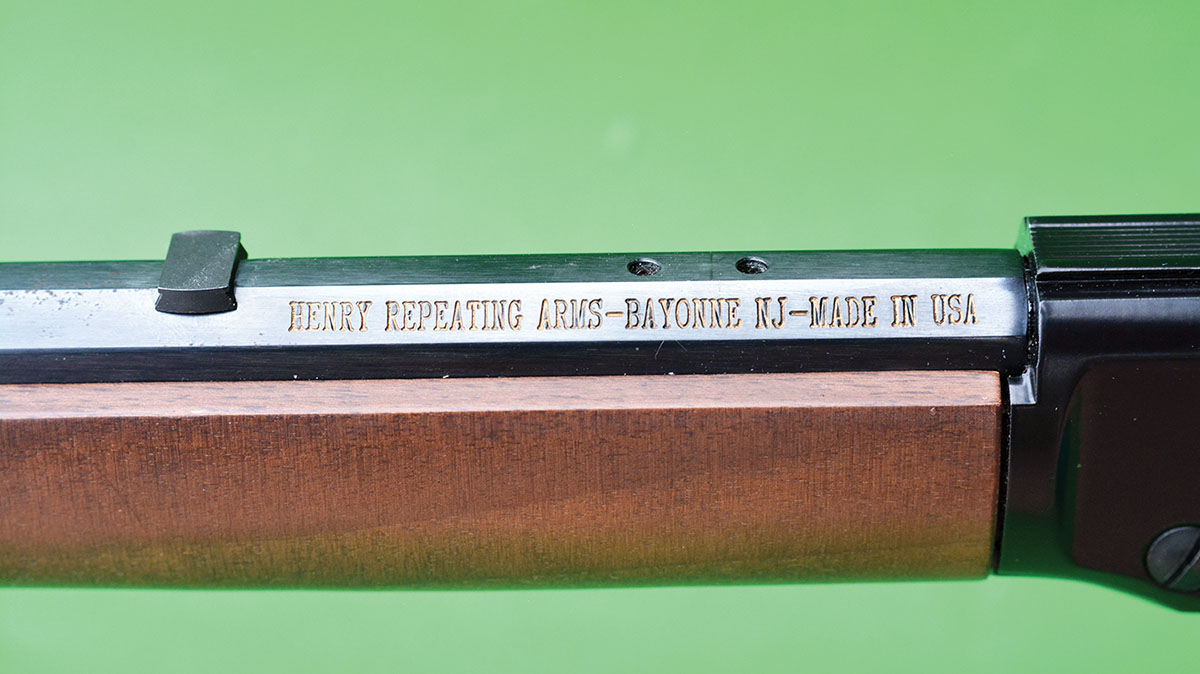
“HENRY REPEATING ARMS-BAYONNE NJ-MADE IN USA” barrel marking.
imported during the middle 1970s and was renowned for its smooth operation, respectable accuracy and moderate price. Naturally, company founders Louis Imperato, and his son, Anthony, brought the tooling to U.S. where production began in 1997, first in Brooklyn, New York, but operations have now been moved to two new manufacturing facilities at Bayonne, New Jersey, and Ladysmith, Wisconsin, with headquarters located at Rice Lake, Wisconsin. The first model was patterned after the Ithaca Model 72 Saddlegun (Model No. H001) and it featured an 18½-inch round barrel in carbine configuration with two barrel bands, blue finish and walnut stock and it remains a staple in the product line with more than one million sold! This huge success allowed the company to expand with many subsequent variations including centerfire lever actions, single shots, auto-loading rifles, shotguns and even revolvers. Henry employs more than 800 people and produces more than 300,000 guns annually. As indicated, the basic design of the Henry rimfire lever action is very similar to the Erma-produced Ithaca brand name rifles; however, they have been notably improved with more reliable feeding, smoother action, better accuracy, better fit and finish.
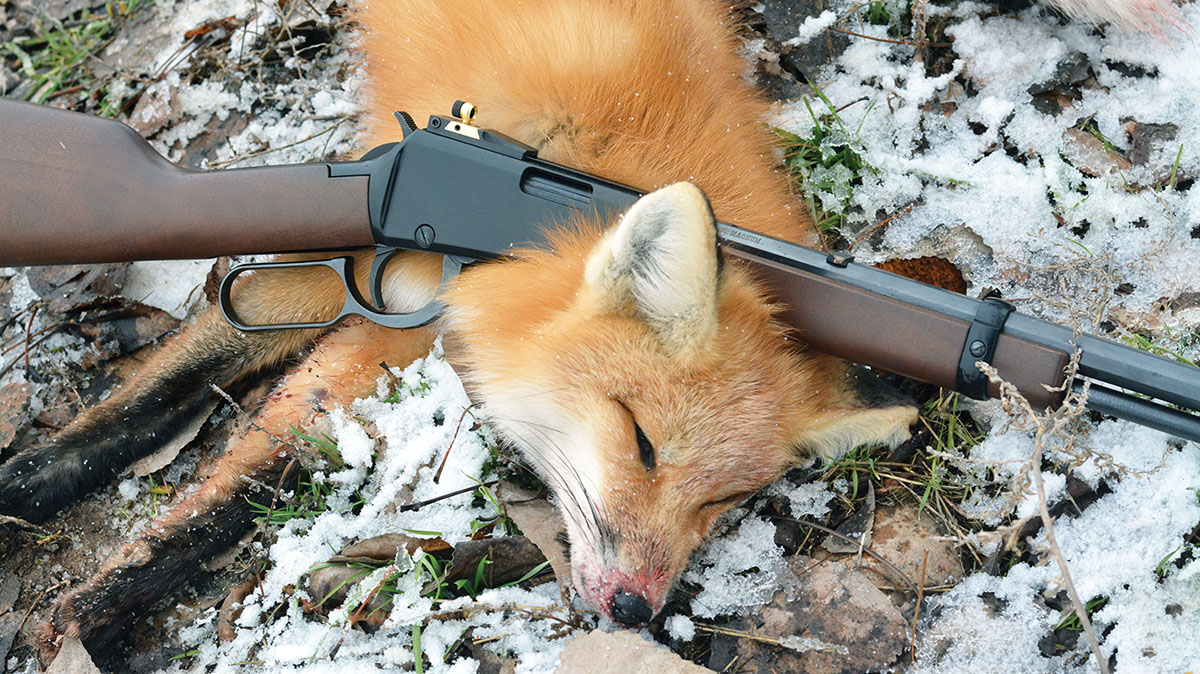
The Henry Lever Action Octagon Frontier 22 Magnum is an excellent rifle and cartridge combination for taking pests, small game and varmints such as this red fox.
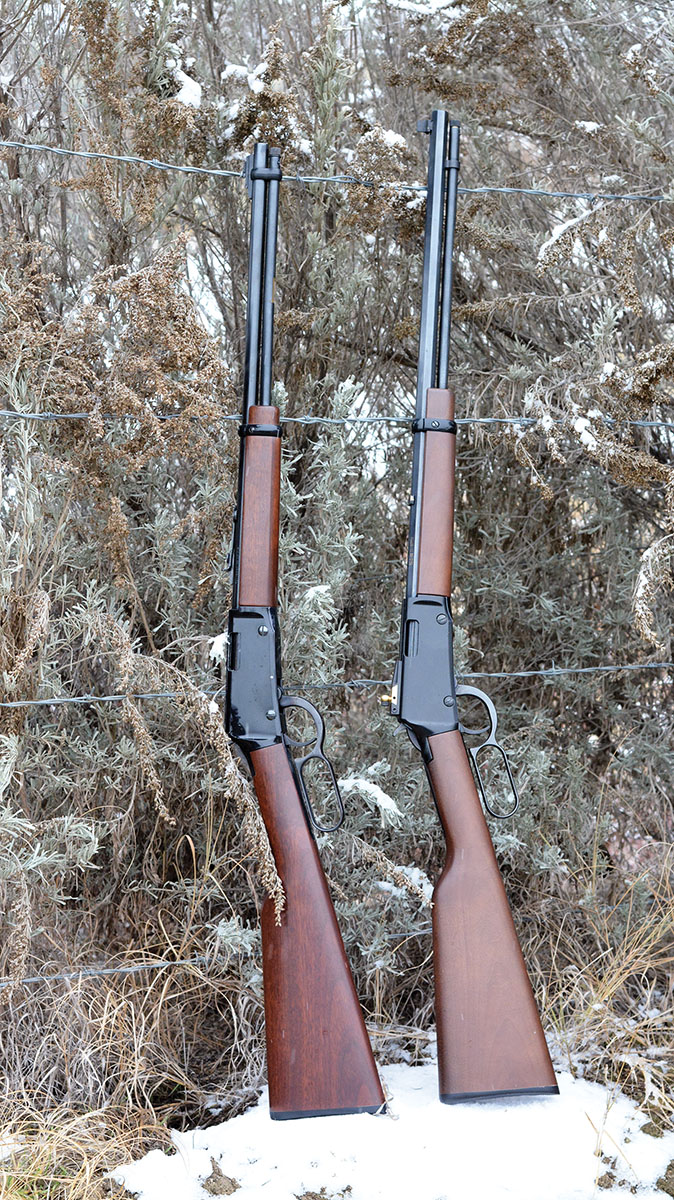
The first Henry Lever Action rifle No. H001 (left) was chambered in 22 Long Rifle and featured an 18½-inch round barrel with carbine-style hardware and boasts of more than one million units being sold. The Henry Lever Action Octagon Frontier 22 Magnum No. H001TM (right) features a 20½-inch barrel, traditional features, American walnut stock and a blue finish.
In addition to 22 Magnum, the Henry Octagon Frontier rifle is offered in 22 Long Rifle (also feeds 22 Short and 22 Long cartridges) and the flat shooting 17 HMR. The barrel is cut rifled and measures .686 inch on the flats and is without taper. There is a single barrel band that secures the forearm and barrel. However, roughly 2 inches from the muzzle, the magazine is secured to the barrel via a dovetail arrangement similar to vintage “rifle configuration” Winchester rifles. The rear sight is a Marbles Semi-Buckhorn, while the front sight features a gold bead. The alloy receiver is grooved for scope or aperture sight mounting and under the rear sight the barrel is drilled and tapped for additional scope mounting options. The action works like traditional lever actions and features three hammer positions including ¼-cock for the safety position. The weight is 6.25 pounds, the length of pull is 14 inches, while the overall length is 39 inches and the magazine capacity is 13 rounds. The action is buttery smooth and worked flawlessly with a variety of loads from CCI, Hornady and Winchester. The trigger pull broke at a consistent, crisp and clean at 2 pounds, 14 ounces.
After some preliminary accuracy tests, it was clear how useful and field worthy this little rifle could be. So a rear aperture sight was ordered from Skinner Sights along with a post-style front. Installation took only a few minutes and after one elevation adjustment and a slight windage correction, the rifle was hitting dead center at 75 yards. I am especially fond of aperture sights, as they are lightweight, offer fast target acquisition, can offer outstanding accuracy, they don’t fog and there is no parallax! Also, by comparison their cost is modest. The Skinner sight ghost ring measures .200 inch, while the quickly changeable apertures (that screw into the ghost ring) are available with hole sizes of .040, .070, .096, .125 and .155 inch and only take seconds to change allowing accommodations for varying light conditions or for any practical application from target work to hunting.
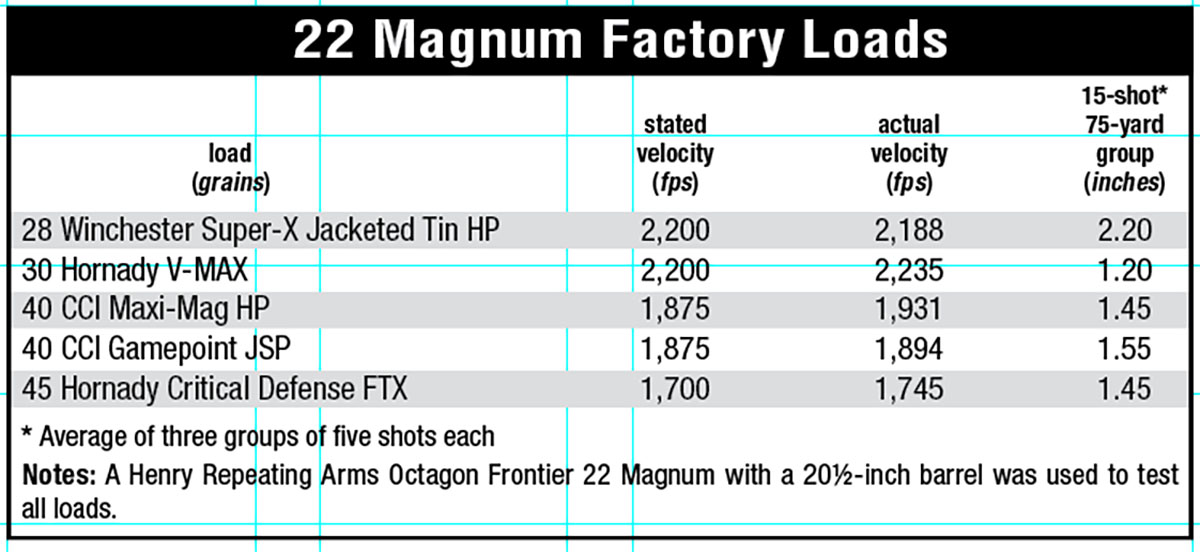
A variety of loads were tried in the Henry Frontier, which generally gave good accuracy (see accompanying table). The Hornady 30-grain V-MAX at 2,200 feet per second (fps) managed to produce three groups, five shots each that averaged 1.20 inches at 75 yards. The old (as it has been around since the 1960s) CCI 40-grain jacketed hollowpoint load at 1,875 fps produced an average of three groups of 1.45 inches.
The great rimfire leverguns from Marlin and Winchester are gone. However, it’s great to have the U.S.-manufactured Henry Octagon Frontier readily available to fill that void. It is a good rifle that’s incredibly smooth and accurate. It functioned flawlessly and carries a modest manufacturer’s suggested retail price of $667.









